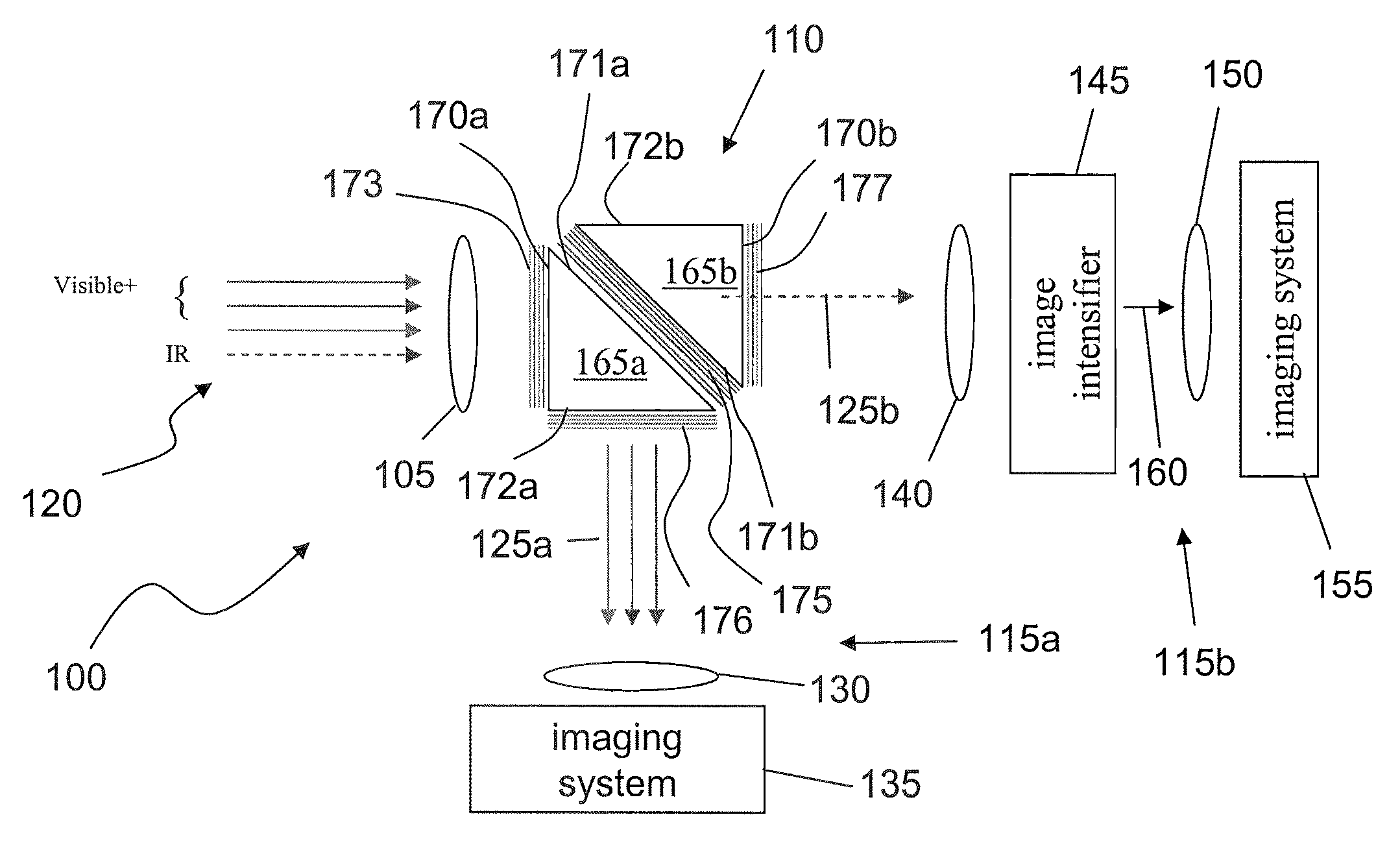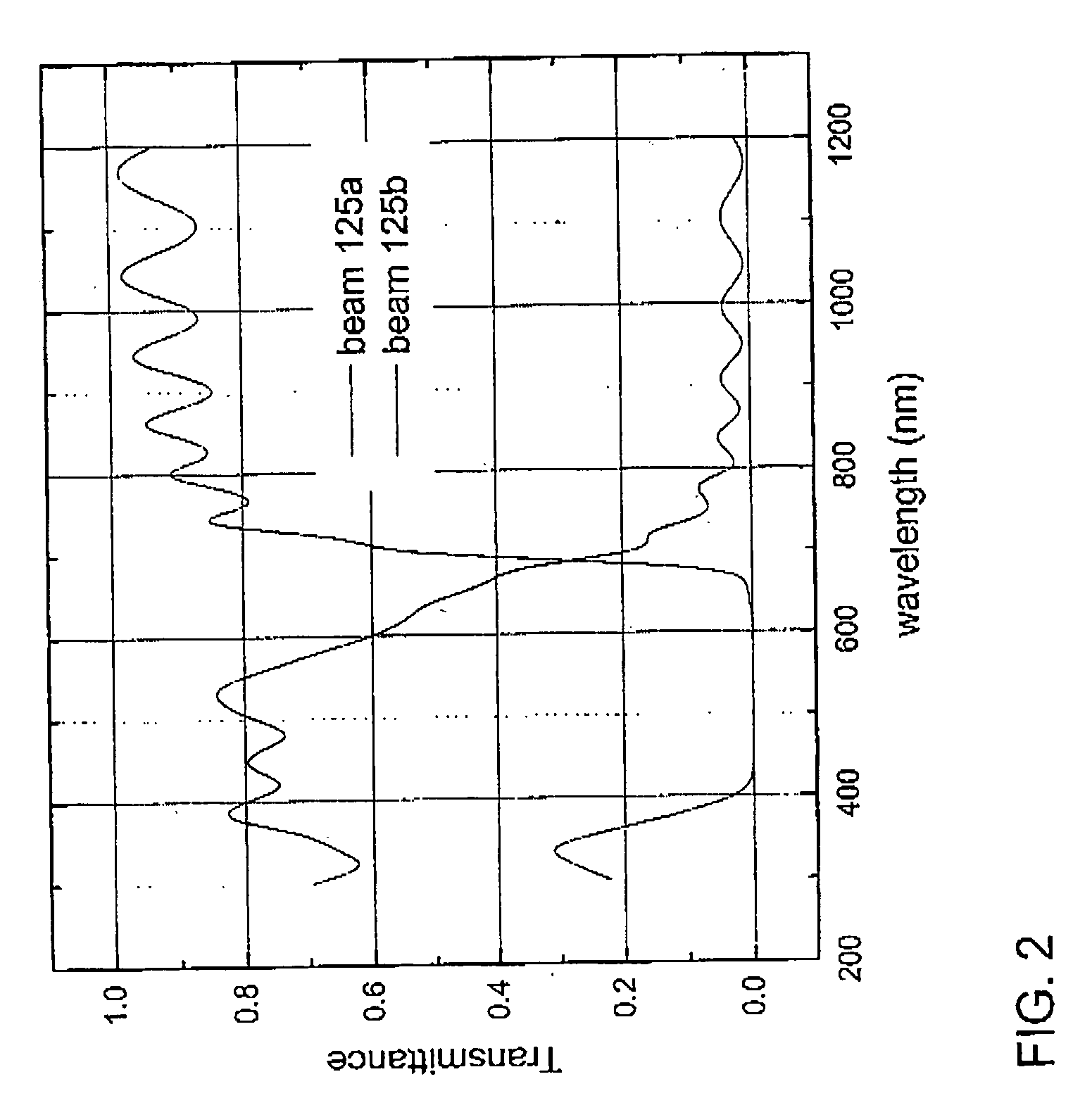Imaging system
a technology of image processing and image, applied in the field of image processing system, can solve the problems of black spots, graininess in video, and a relatively long time for the current intensifier to recover from blooming, and the net loss of information during the recovery of the current intensifier and/or during the switch from the night vision camera to the visible camera could be very costly, so as to improve the operational life of the night vision camera, avoid visual information loss, and high efficiency
- Summary
- Abstract
- Description
- Claims
- Application Information
AI Technical Summary
Benefits of technology
Problems solved by technology
Method used
Image
Examples
Embodiment Construction
[0023]The Figures described hereinafter illustrate various exemplary embodiments of the invention. These embodiments are in no way intended to be limiting, and are intended only as examples for facilitating an understanding of the principles of the present invention.
[0024]In an embodiment of the invention there is provided a visible—night vision combo optical system that is adapted to combine multiple spectral images of a scene. In one implementation, the system includes a spectral beam separator configured to split an incoming beam of radiation into a first and a second beam of radiation, the first beam of radiation including radiations substantially in a first spectral band and the second beam of radiation including radiations substantially in a second spectral band. The first spectral band may include the visible band. The second radiation band may include the near infra-red and portions of the deep infra-red. The optical system also includes an image intensifier configured to in...
PUM
 Login to View More
Login to View More Abstract
Description
Claims
Application Information
 Login to View More
Login to View More - R&D
- Intellectual Property
- Life Sciences
- Materials
- Tech Scout
- Unparalleled Data Quality
- Higher Quality Content
- 60% Fewer Hallucinations
Browse by: Latest US Patents, China's latest patents, Technical Efficacy Thesaurus, Application Domain, Technology Topic, Popular Technical Reports.
© 2025 PatSnap. All rights reserved.Legal|Privacy policy|Modern Slavery Act Transparency Statement|Sitemap|About US| Contact US: help@patsnap.com



